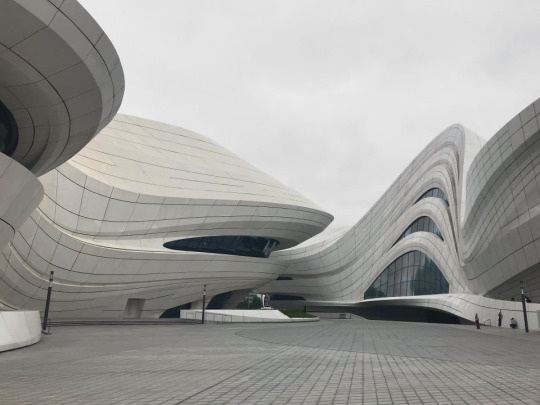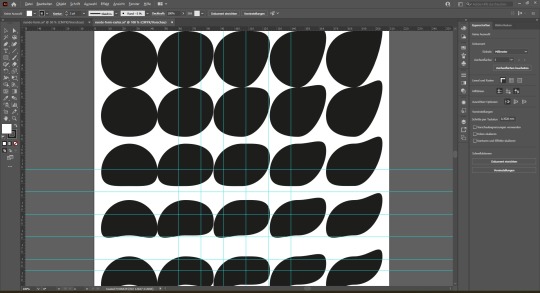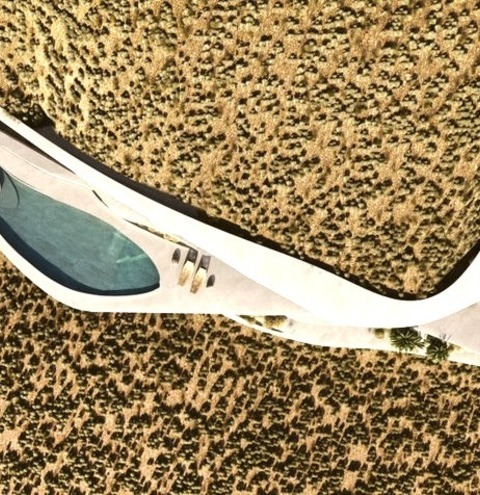#parametric design
Explore tagged Tumblr posts
Text

Zaha Hadid Architects
Changsha Meixihu International Culture and Art Centre, China, 2019
Image: Source
#zaha hadid#zaha hadid architects#architecture#parametric architecture#design#architectural design#parametric design#contemporary architecture#postmodern architecture#dezeen#archdaily#architizer
525 notes
·
View notes
Text

15 notes
·
View notes
Text
youtube
In this Grasshopper exercise for beginners, you'll learn about many components and techniques that will help create many forms besides the one in the video. At the end of this tutorial, I will leave you with 2 small exercises that you can do on your own, basically minor adjustments to this exercise.
#mcneel grasshopper#grasshopper3d#grasshopper#grasshopper tutorials#parametric3d#parametric modeling#parametric design#grasshopper modeling#learn grasshopper#rhino grasshopper#mcneel rhino#rhino 3d#parametric tutorials#grasshopper tips and tricks#Youtube
2 notes
·
View notes
Text
Today, I decided to get a few things together, and tested out working with my tablet* by picking up a copy of Grünberger’s “Analog Algorithm” we have lying around in Mannheim and, well, working with it (you can see the work in progress on my Instagram here: https://www.instagram.com/p/C8KhRwxCn0J/
After a few issues with storing and naming the files I worked with (and I am still pretty sure that I didn’t get the permutations right), I posted the screenshots to my Instagram account, while remembering that this was not the first time I worked with this particular book.
Switching back to my laptop, I looked for the files from last time, and especially from when they they were.
Boy, was I surprised to see their date: 22nd of June, 2022. Two years ago, bachelor’s thesis between those files and now, if I may. I am consistent in my summer endeavours.

And I had this smile on my face. How awesome is that? You just continue from where you left off. No deletion, no destruction, just a continuation of your own process, at your own pace.
As part of my explorative investigations into design as program(me), I’m also investing time into Karl Gerstner’s “Designing Programmes”, as well as an aside and, for later, Christian Büning’s “Zirkeltraining für die Augen”, a book which will hopefully allow me to improve my visual design acuity at first glance, which I value as very important for an art director.
Link list of the books mentioned:
Get “Analog Algorithm” from slanted, Lars Müller Publishing, or from Amazon Read more about Analog Algorithm on its dedicated website, https://analog-algorithm.com/
Get the “Designing Programmes” 1967 edition from archive.org, Amazon, and from Lars Müller Publishing There is also a new reprint of this book, which you can find here, https://haraldgeisler.com/books/ in English, German, and French, bien sûr!
Get “Zirkeltraining für die Augen” from Werkstoff Verlag, or from Amazon.
Link list of the people mentioned
Christoph Grünberger’s Linktree
Karl Gerstner’s estate Website
Christian Büning’s studio Website
*Adobe Illustrator is sluggish on my tablet, while making me angry with how file storage works for these poor ports of the excellent desktop app
#analog algorithm#graphic design#parametric design#programmatic design#christoph grünberger#karl gerstner#christian büning#code & canvas#after-hours blogging#after-hours#graphic design books#adobe illustrator
3 notes
·
View notes
Text
[3045] scarlet
4 notes
·
View notes
Text
Comprehensive Training in Building Design with Revit Architecture

Learn how to design, plan, and document building projects using Revit Architecture. Focus on Building Information Modeling (BIM), including parametric components, workflows, and collaborative design tools.
Visit Attitude Academy Yamuna Vihar :- https://maps.app.goo.gl/gw9oKCnXDXjcz4hF7 Uttam Nagar :- https://maps.app.goo.gl/iZoQT5zE3MYEyRmQ7 Yamuna Vihar +91 9654382235 Uttam Nagar +91 9205122267 Visit Website: https://www.attitudetallyacademy.com Email: [email protected]
#Revit Architecture#BIM#building modeling#architectural drafting#construction documentation#parametric design#architectural design software#Revit workflow
0 notes
Text
How Parametric design is changing the way we create Furniture: Beegraphy Design Challenge Series - BeeGraphy Blog
In the world of furniture and home furnishing design, computational and parametric approaches are revolutionizing how designers create innovative, functional
0 notes
Text
The Intersection of Parametric Design and Sustainability in Modern Architecture

This article explores the intersection of parametric design and sustainability in modern architecture, highlighting how this synergy is driving innovation in the field. It delves into how parametric tools enable architects to create highly efficient, environmentally friendly buildings by simulating and optimizing designs before construction begins. The article also discusses the role of parametric design in reducing energy consumption, minimizing waste, and promoting the use of sustainable materials. Through case studies and expert insights, the article illustrates how parametric design is not only enhancing architectural aesthetics but also advancing the sustainability agenda in the built environment.
0 notes
Text
The might morphin’ Splinter (Devanagari) designed by Namrata Goyal and Frederik Berlaen and engineered by Joana Ranito and I is now available via Future Fonts!
#splinter#devanagari#typography#indictype#namrataGoyal#frederikBerlaen#futureFonts#typefaceDesign#graphicDesign#type#graphics#india#fonts#variable#variableFonts#animated#parametric design#typefaces#joanaRanito#hindi#letters#letterforms
0 notes
Text
Freeform: Parametric 3D prints (2016)

Collaboration with Madeline Gannon for Freeform TV. We created parametric designs that would generate unique 3D bracelets based on data extracted from users' Twitter timelines.
Madeline has more documentation: ATONATON - Freeform
Developed in Processing, 3D print on-demand by Shapeways. 5000 bracelets were printed as a giveaway for Freeform fans.
1 note
·
View note
Text

Zhubo Design
The Hainan Chronicles Hall, 2019
#zhubo design#architecture#contemporary architecture#architectural design#facade#design#parametric design#organic architecture#dezeen#archdaily
40 notes
·
View notes
Photo

Concrete - Modern Exterior An illustration of a sizable, monochromatic, one-story house with a concrete exterior and clapboard siding that has both a green and a gray roof.
0 notes
Text
youtube
Please watch the first part if you never used the Closest Point component before: https://youtu.be/Js5-fgpAPUQ Files used in the first video can be downloaded here: https://drive.google.com/file/d/1-SUfsHZSCIHAxBVbIZ0jCM00C5PS5mg3/view?usp=sharing In this second part, we will add the Remap Numbers components to map the original distance range into a new custom range, where we control the minimum and maximum move amount on the Y-axis. Please watch until the end to get a full explanation of the process.
#grasshopper3d#grasshopper#rhino grasshopper#mcneel grasshopper#parametric 3d#parametric modeling#parametric design#grasshopper beginners#parametric beginners#grasshopper tips#learn grasshopper#learn parametric#mcneel#grasshopper tutorials#parametric tutorials#Youtube
0 notes
Text
More analog algorithms
Following up on https://codeandcanvas.tumblr.com/post/753299978126016512/welcome-back-i-was-having-issues-with I worked on better understanding (and better counting boxes, more on that below) how these permutations progress.
The examples provided in “Analog Algorithm” this far are visually appealing, and along with some experimentation on my own, I expect to improve my own skills as a graphic designer further.
But first, a mistake.
When you work with the samples in the book, you can use the final shape in the bottom right square to check for mistakes: if you make a mistake in the application of the algorithm, the final shape will look different from the one in the book. Same applies to the individual shapes in the columns and rows: each should look like a progression from its neighbors.
So, when my final shape didn’t align with the author’s, I assumed that my grid was wrong.

I was working at a reasonable canvas size of 1m by 1m, so that I could do fractions more easily: each larger square in the grid is 8cm on its side, broken up into a grid of 8 by 8 1cm squares, while the whole grid is made up of 8 of these larger squares on its side.
And, looking at my algorithm and the author’s, sure enough, I imagined to see him use a grid of 9 by 9 1cm squares. I was sure. I even laughed about how tricky he was, making sure I was paying attention. So I redid the grid with the new measurements, and applied the algorithm to that, too.



So, looking at the final shape on the bottom right, I knew I messed up. I messed up so badly, I started to consider whether or not the author made a mistake in his algorithm.
I took a breather, and then understood that the smallest grid was not a nine by nine grid at all, but always was an eight by eight grid.
So I did it properly this time, checked for mistakes and misalignments, and ended up with the finished permutation grid, which is also correct:
And I happen to find a lot of appeal in these. Maybe you will, too.



#work in progress#grafikdesign#parametric design#made with illustrator#grid system#grid systems#algorithmic design#design as a program#rules for design#karl gerstner#system-based#explorative investigation#analog algorithm#code and canvas
1 note
·
View note
Text
[3043] race rat
3 notes
·
View notes
Photo

Modern Exterior Example of a huge minimalist gray one-story concrete and clapboard exterior home design with a green roof and a gray roof
0 notes